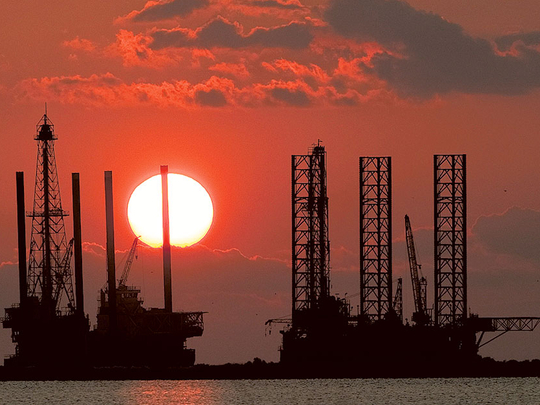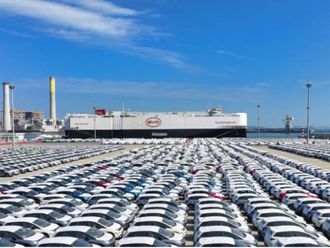
London: Five years and about $54 billion on from the Deepwater Horizon disaster, BP is at last close to knowing the full financial cost of the worst offshore oil spill in US history.
Its $18.7 billion settlement for civil penalties and damages with US federal, state and local governments has resolved most of the remaining uncertainty that the company faced — and on reasonably favourable terms. Although the total promised by BP is the largest ever environmental settlement for a single company, it is modest when compared with the sums that those governments had claimed, or were potentially looming, in the future.
Moreover, it is spread over a period of 15 to 18 years.
BP’s estimate of $54 billion for the identified costs of the disaster is proportionate to ExxonMobil’s figure of $4.3 billion for the Exxon Valdez accident in 1989, given that BP is thought to have spilt about 12 times as much oil.
Uncertainties remain, including the cost of claims from businesses and individuals who opted out of the settlement that BP agreed with plaintiffs’ lawyers in 2012. Some who were not covered by that settlement — including workers in the oil industry who were affected when the Obama administration decided to shut down drilling in the Gulf — have also launched legal actions.
In addition, a court in Houston is hearing claims from shareholders who say they were misled by the company’s initial statements about the size of the spill. BP says it will defend those claims “vigorously”.
Probably the largest remaining unknown item is the cost of compensation payments for businesses covered by the 2012 settlement, which have been running far ahead of BP’s expectations.
Its legal moves to cut the cost of those claims have met only limited success. When BP gives an update on these payments with its second-quarter earnings release later this month, it is likely to warn of an increase in the expected cost from the $10.3 billion it has set aside.
Even here, though, the end is in sight: the deadline for submitting claims for business losses under the settlement was June 8. So BP’s potential maximum liability should be becoming clearer.
For all sides, there is value in having clarity. As Cynthia Sarthou, executive director with Gulf Restoration Network, an environmental group, put it: “The needs of the Gulf are urgent and, by settling this case, we avoid years or even decades of legal wrangling.”
Talks about a settlement between the US governments and BP have been going on for years, and a deal was reported to be close before the trial over the spill began in 2013. BP did manage to reach a deal over the criminal charges it faced later that year, agreeing to pay $4.5 billion, but the gap between the company and state and local governments was too wide.
BP had estimated the total value of state and local claims for economic damages at $34 billion. It it now paying only $13 billion to meet both those claims and environmental damages.
Another important aspect of the deal for BP is that it has reached a final figure for those environmental damages. Although the formal Natural Resource Damage Assessment — a huge research effort backed by the US government — has yet to reach a conclusion, BP’s settlement is expected to protect the group against the risk of being hit with large additional costs in the future.
In the City of London, the response was positive. One UK-based energy analyst described the headline settlement as “terrible, but much more palatable being spread over 15 years. It gives closure and the market will like that.” (BP’s shares ended 4.4 per cent higher.)
Fitch, the credit rating agency, said the deferral of payments gave BP the opportunity to improve its balance sheet and navigate the oil industry slump. Senior executives should now be able to shift their attention from the litigation and focus more on growth, especially in the Gulf of Mexico.
BP has pointed to the potential for more than 900,000 barrels of oil equivalent a day of net new production by 2020. Half of this output is under construction but an extension to its Mad Dog field in the Gulf is delayed. Some investment decisions may now be accelerated, allowing projects such as Mad Dog to move ahead sooner.
Indeed, the greater flexibility afforded by settling Deepwater Horizon is long overdue. BP is much smaller than it was before the incident, having sold more than half its pipelines, 35 per cent of its wells and 12 per cent of its reserves. That downsizing was necessary, but the pace of contraction has raised questions over whether it has the scale to compete for big fields.
It is studying 50 major projects. While the group has slimmed down its portfolio with more than $40 billion in asset sales, it believes that many of those now under consideration are economic even at today’s lower oil prices. Bringing online new projects in the Gulf, such as the Thunder Horse expansion, will be essential.
Sustaining the dividend following the recent sharp slide in oil prices remains the immediate priority: capital spending for this year has been cut by 20 per cent. But cover that spending and the dividend with cash flow and BP should be able to pursue its growth ambitions.
Acquisitions may even follow. Either way, expect to see a nimbler BP.
— Financial Times












